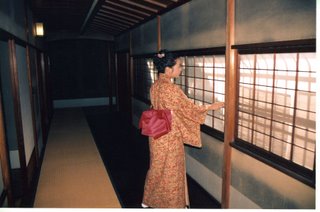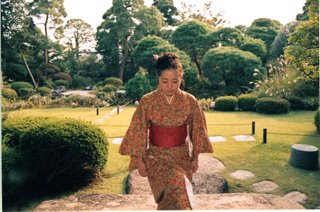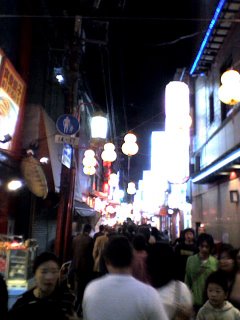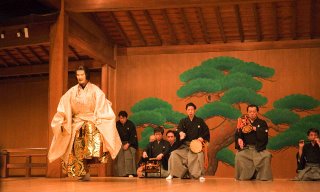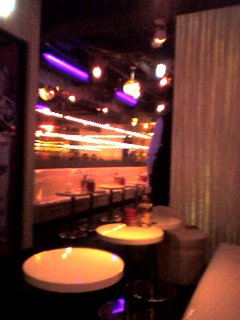
Last Thursday, I decided to go into a real Japanese hostess club to work for one night only. I was very nervous before hand, but I thought doing this would make me understand what the job involves, and how girls must feel when they're working. So, I arrived at the club at 9pm to have a quick "interview" with the manager. I filled in a couple of forms, they asked if I had worked in "mizushobai" before, and told me not to worry because no prior experience was needed for this job. The manager was kind, and I think he could see that I was very worried. He gave me a name-card, and asked me if I wanted to change my name. I said no, but he wrote my name in katakana anyways, and told me the basic rules that I should know. The first and most important was never ever to cross my legs. I asked why, and he told me that it was the most common rule in all hostess clubs, and he himself didn't know why they had that rule. Then, without telling me anything else, he urged me to get ready.
I went upstairs to the changing rooms with a fluttery stomache. I was given a dress to wear and some stockingings. There were already several girls that were waiting there, crimping their hair and putting on make-up. Everyone was surprisingly nice, and when they heard it was my first time, they all took pity on me and volunteered to do my hair or my make-up. The preparation stage was probably the most awful. They pulled at my hair, put hundreds of pins in, choked me with their strong hairsprays and caked the make-up on. When I looked at myself in the mirror I looked like a different person. This actually made me feel better about the whole thing, because all I had to do now was to play the part of a hostess.
It was a very rainy Thursday, so I wasn't expecting many customers, but they flooded in as soon as it was 11pm. The girls would rotate between the various tables every 20 minutes, and pour drinks (water downed whiskey) and make conversation with businessmen. I sat with a group of four men who had been out drinking together. The man I was assigned to told me that they worked in an all-man environment, and he had no chance of meeting girls. When I told him that rather than going to these clubs, he should find a nice stable girlfriend he seemed surprised. Because no-one had told me what to talk about, I was left on my own from the very beginning. There are hand signals for asking the bartender for drinks, an ashtray or ice. My first attempts at the hand signals were quite hilarious, and the business man and I laughed together about my awkwardness. So far, so good.
However, some of my other customers later on were not so good. There was a salary-man and his supervisor drinking together, and the boss' was lecturing (drunkly) to another hostess. He was saying things about her appearance, telling her to improve her looks, and asking her intrusive questions. I was surprised at how well she handled the situation. She stayed for her assigned 20 minutes without making any remark and left quietly without complaint. When I saw her again later in the dressing room, she was furious at the way he treated her. This is when I could see that this job requires a lot of patience at being treated badly.
The night wore on, and there were incredibly amount of alcohol being consumed by the men. Girls are not allowed to drink, so we had "tickets" for juice that were faked to look like cocktails. So, the men pay 1100 yen for your cocktail, which happens to be juice from the local supermarket. I was also able to eat a lot, because one customer ordered three plates of party food, and wasn't eating anything. I was getting tired by midnight, and I felt exhausted partly due to my incredulous high heels that were killing me.
Because of the tiredness, I started to make little mistakes. My big fiasco of the night was not watering down a sake drink for my customer. I had learned what to do with whiskey, but not with sake, so I poured it all in straight and gave it to him. Because it's a clear liquid he thought it was mixed and took a huge gulp. His reaction afterwards was horrendous. He nearly choked with surprise and then his face blew up red with confusion, drunkeness and anger. I thought I would be kicked off the table, but I told him it was my first day on the job, and weazled my way out of it. Whew.
At 1am, I was finished. I got 6000 yen for the night's work, and said goodbye to the girls. Some of the girls were still waiting for their customers, studying or chatting up in the dressing room. They were genuinely nice girls who were smart and working towards a goal such as becoming a dentist, a fashion designer or an enterpreneur. I learned a lot from my experience, and I was able to see both the positive and negative side of the hostessing business.


